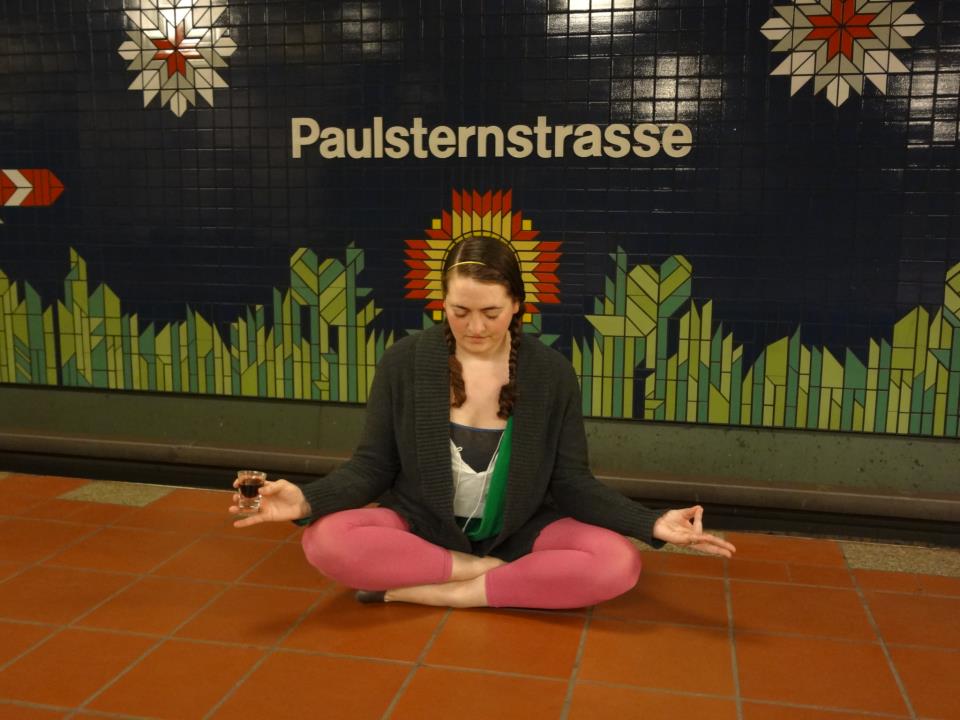Don’t worry – this is nothing to do with Josef Fritzl…although mentions of basements seem to bring up that imagery. (To be fair, Fritzl was from Austria like another infamous German speaker). This post is about the German basements (Keller or Souterrain or Untergeschoss), a mysterious place beneath most German apartments where stalls of old furniture, bikes, and seasonal accessories are kept.
In our last apartment, a tiny Dachgeschoss (attic apartment), we weren’t allotted one of these coveted basement spots. So we got creative. There was a shelf built into the loft of the foyer, we bought large closets and crammed things just about everywhere. It worked, but barely. Once we had a kid – it was over. Baby clothes and toys and just stuff spilled out of everywhere. It was time to move – ideally to somewhere with some storage.
Enter our current apartment – a 3 room (2-bedroom in American) Altbau with the distinctive sky-high ceilings, double windows, and original wood floors you expect to see in a building of this style. We toured the apartment before applying of course, but didn’t see one important area of the apartment. Measuring in at about 5 sq meters (53 sq feet), a basement space also came with our rental.
What German Basements Look Like
The first time we saw it was when we signed the contract, following the Immobilienhändler (real estate agent) down the darkened stairs and into the dusty subterranean layer. The first thing you see is a hand-painted sign on the wall, “Schutzraum für 18 Personen“, noting the space’s dual capacity as a bomb shelter with room for 18 people. My husband and I stopped and gaped and I quickly took a picture. The agent was clearly amused by our wonder, but I was thunderstruck. Sure you see the bullet marks on old Berlin buildings and I cross the brick line where the Berlin Wall lies everyday, but this tangible history in our very own home felt so personal.
Like most German basements, ours consists of a series of hallways with little rooms cordoned off behind wooden doors with the same locks people use to chain their bicycles. This is completely unlike American basements that are usually one large room. Our Keller is basically tidy, but with its low ceilings and dark corners it looks like the perfect background for a horror movie. Just like a little kid (in the USA or Germany), I get a little jumpy being down there alone.
Next on the list was actually moving in. After loving and living in our tiny attic place, our new apartment is twice the size with built in shelving, a storage room in the unit and this new basement space. At first we didn’t put anything down there and this excess of storage space felt ridiculously luxurious. But – slowly – it filled up. Even more baby clothes and toys found their way down there as baby turned into girl. Christmas decoration and winter coats rotated with summer shorts and inflatable floaties. And on a recent spring clean as I dug through the boxes, I realized we had completely filled our basement space. So much for accumulating less stuff living outside of the USA.
Clearly, I am not alone. It was a bit cluttered in the hallways when we moved in and got steadily worse in the coming months. Eventually the Hausverwaltung (property management) had enough and sent a notice that everything must go – or else it would be trashed within 30 days. People cleaned up the random stuff that had made its way down there – broken plastic chairs and old crates – but several months later things are beginning to appear in the communal areas once again.
Unusual German Basements
However, these are far from the weirdest things to find in a German basement. Not so long ago, a 44-ton Nazi tank was discovered in an elderly man’s basement. He actually had a massive collection of National Socialist memorabilia including a torpedo and an anti-aircraft gun. Besides this being entirely unsafe to store beneath a residential building, it is against the Kriegswaffenkontrollgesetz (War Weapons Control Act) which requires military weaponry to be licensed. The tank and other weaponry had to be removed, taking 20 soldiers almost nine hours to safely cleanse the building.
Still a bit unusual for my North American mindset, but perfectly fitting for the spa-obsessed Germans, some German basements include a sauna. Now that is a basement I could hang out in.







0 Comments